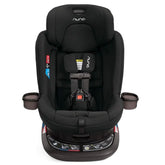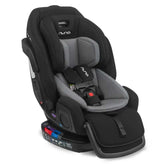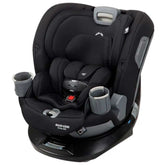The Ultimate Car Seat Buying Guide: What You Need to Know

Welcoming a new little one into your family is an awesome, life-changing experience, full of immeasurable happiness and a new sense of responsibility. Amid the newfound joy, the safety of your precious cargo becomes a huge concern. One of the most important ways you can keep your child safe while on the road is by selecting the right car seat. If you’ve spent even a few moments perusing the Internet, you know the market is flooded with options, making the task feel a little overwhelming for new parents. To help you navigate this crowded field, ANB Baby has created this comprehensive buying guide for car seats. Let’s take a closer look at the intricacies of choosing the perfect car seat for your little one, different types of car seats, safety features, and smart installation tips.
Types of Car Seats
Infant Car Seats (Rear-Facing)
The very first type of car seat many parents own is a rear-facing-only infant car seat. Tailored for newborns and infants (typically up to 22-35 pounds), these rear-facing seats offer crucial support for a baby's delicate neck and spine. The American Academy of Pediatrics (AAP) strongly recommends keeping infants in rear-facing car seats until they reach the maximum weight or height set by the manufacturer, emphasizing the enhanced safety provided in this position. This is because the rear-facing orientation minimizes the forces exerted on their underdeveloped neck muscles and vulnerable spinal column during sudden stops or accidents. Manufacturers often design these seats with additional features, such as removable newborn inserts, ensuring a snug fit for even the tiniest passengers.
The convenience of an infant car seat extends beyond the vehicle, allowing for easy removal of the seat from its base. This portability is a game-changer, enabling parents to seamlessly transfer a peacefully sleeping baby from the car to a stroller or home without disruption. The convenience factor, combined with the unparalleled safety benefits of rear-facing positioning, makes rear-facing-only infant car seats an essential investment for many new parents.
As you explore the vast array of infant car seat options, consider those that meet or exceed safety standards, offer easy installation mechanisms, and provide additional features like adjustable canopies and machine-washable covers for added convenience.
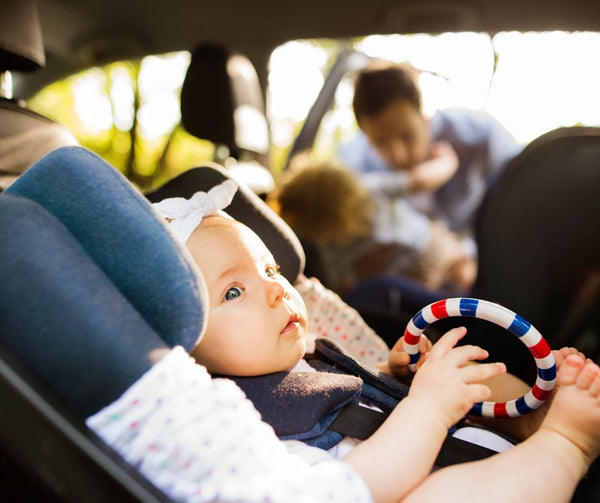
Convertible Car Seats
As your baby grows and transitions through various developmental stages, some parents prefer to invest in a convertible car seat (also called an all-in-one car seat) as a versatile and long-term solution for the evolving needs of their child. These seats are ingeniously designed to cater to both rear-facing and forward-facing orientations, providing a seamless transition from the early infant months to the toddler and preschool years. The adaptability of convertible car seats not only addresses the changing dynamics of your child's growth but also serves as a cost-effective investment, eliminating the need for multiple seats during the early years.
One of the notable advantages of convertible car seats is the extended duration they serve as a rear-facing option. Many models offer higher weight limits for rear-facing, allowing you to prioritize the safety benefits of this position for an extended period. This extended rear-facing capability aligns with the AAP's emphasis on the importance of keeping children in this position until they outgrow the manufacturer's specified limits. As your child grows and meets the weight or height limit for rear-facing, their seat can be effortlessly adjusted to a forward-facing position, accommodating toddlers and preschoolers.
When selecting a convertible car seat, consider factors such as ease of installation, adjustability of the harness system, and additional safety features. Convertible car seats often come with a variety of user-friendly features, making the transition between configurations seamless and stress-free for parents. Look for models that prioritize safety, comfort, and ease of use. A well-chosen convertible car seat becomes a steadfast companion on your parenting journey, adapting to the changing needs of your child and providing a secure environment for countless adventures on the road.

Booster Seats
The transition to a booster seat marks a significant milestone in your child's journey through the stages of car seat safety. As your child outgrows the convertible car seat, booster seats play a pivotal role in ensuring that your growing child is positioned optimally to use the vehicle's seat belt effectively. According to the AAP, “All children whose weight or height exceeds the forward-facing limit for their car safety seat should use a belt-positioning booster seat until the vehicle seat belt fits properly, typically when they have reached 4 feet 9 inches in height and are 8 to 12 years of age.”
Booster seats serve a crucial purpose in bridging the gap between the limitations of a standard car seat and the readiness of your child to use a seat belt independently. The National Highway Traffic Safety Administration (NHTSA) recommends using a booster seat until the child can comfortably use a seat belt without it, emphasizing the importance of continued protection during this transitional period.
Booster seats come in two primary types: high-back boosters and backless boosters. High-back boosters provide additional head and neck support and are suitable for vehicles without headrests or for children who appreciate the extra support. Backless boosters are a more compact option, ideal for older children who have outgrown the need for a high-back booster but still require proper seat belt positioning.
When selecting a booster seat, consider features such as an adjustable headrest, cup holders, and a comfortable seating surface. The booster seat should position the seat belt across your child's chest and lap, ensuring it rests on the strongest parts of their body in the event of a collision.
As your child enters the booster seat stage, involving them in the process can foster a sense of responsibility and cooperation. Engage in a conversation about the importance of using a booster seat and explain how it enhances their safety during car rides. Encourage them to take an active role in buckling up, reinforcing good habits that will carry into their future as responsible passengers.

Car Seat Accessories
Beyond the fundamental types of safety seats, various car seat accessories enhance the functionality, comfort, and safety of your child's travel experience. Understanding these accessories can contribute to a more enjoyable and secure journey:
- Adapters: Useful for seamlessly transitioning an infant car seat from the car to a stroller, adapters provide convenience for on-the-go parents.
- Base: The base of a car seat provides a stable platform for installation in the vehicle. Many infant car seats come with a detachable base, allowing for quick transfers without reinstalling the seat.
- Canopy: Car seat canopies shield your child from the elements and provide a cozy environment, ensuring a comfortable ride in various weather conditions.
- Covers: Seat covers add an extra layer of protection, safeguarding the car seat against spills, crumbs, and general wear and tear.
- Cup Holders: Designed for convenience, cup holders attached to the car seat offer a practical solution for keeping drinks within easy reach during travel.
- Footmuffs: Particularly beneficial in colder climates, footmuffs provide additional insulation and warmth for your child's lower body during winter months.
- Infant Inserts: Padded infant inserts ensure a secure and snug fit for newborns in the car seat, providing optimal support for their tiny bodies.
- Organizers: Car seat organizers help keep essentials like snacks, toys, and wipes organized and easily accessible during journeys.
- Seat Liners: These liners add extra cushioning to the car seat, enhancing comfort for your child and protecting the seat's fabric.
- Seat Protectors: Placed under the car seat, seat protectors prevent damage to the vehicle's upholstery, particularly when using the car seat over an extended period.
- View Back Mirrors: Installed on the rear headrest, view back mirrors allow parents to keep a close eye on their rear-facing infants, ensuring peace of mind during travel.
Understanding the variety of car seat accessories available allows parents to tailor their child's travel environment for both safety and comfort. Choosing the right combination of accessories can enhance the overall car seat experience, making every journey a seamless and enjoyable adventure.

Key Safety Features to Look For in a Car Seat
Five-Point Harness System
One important safety feature to prioritize is the five-point harness system. This system secures the child at the shoulders, hips, and between the legs, effectively distributing crash forces across the strongest parts of their body. The AAP advocates for the extended use of a five-point harness for as long as the seat accommodates, highlighting its role in minimizing the risk of injury in the event of a collision.
Side-Impact Protection
Side-impact collisions pose a significant threat, prompting the inclusion of additional safety features in car seats. Look for seats with reinforced sides, energy-absorbing foam, or air cushions designed to mitigate impact forces in a side collision. This extra layer of protection contributes to a comprehensive safety package.
Easy Installation Mechanism
Proper installation is a non-negotiable element of car seat safety. Opt for seats with user-friendly installation mechanisms, such as LATCH systems or clear and straightforward instructions. Many fire departments and police stations offer car seat installation checks, ensuring that parents have correctly installed the seat and maximizing its effectiveness.
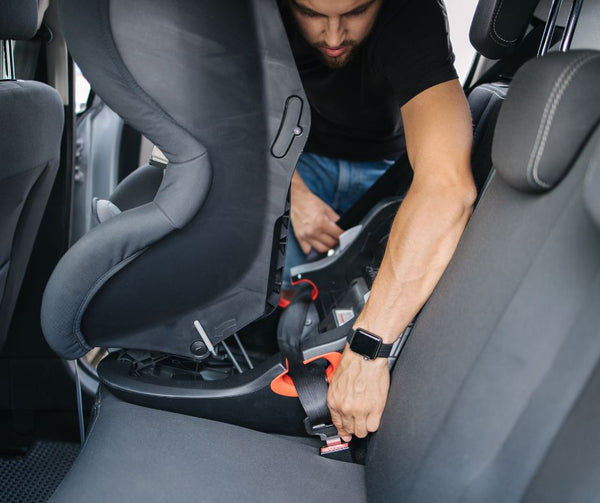
Installation Tips for Car Seats
Research by the National Transportation Safety Board has shown that although 96 percent of parents and caregivers believe they have installed their child's car seat properly, an astounding 80 percent of all car safety seats are actually used or installed incorrectly. This greatly diminishes their effectiveness. The good news, though, is that a correctly installed and used safety seat can reduce the risk of death in infants and toddlers by as much as 71 percent if an accident occurs. Here’s how to make sure your car seat is installed correctly.
Read the Manual
The user manual is an invaluable resource when it comes to installing a car seat. Each seat comes with specific instructions, and taking the time to thoroughly read and understand the manual is crucial. The AAP stresses that properly installed car seats significantly reduce the risk of injury in a crash.
Check for a Secure Fit
After installation, confirm that the car seat is securely in place by giving it a firm tug at the base. The seat should not move more than an inch in any direction. If it does, it's imperative to recheck the installation to ensure optimal protection.
Harness Adjustment
Regularly check and adjust the harness to ensure a snug fit. The straps should lie flat with no twists and be threaded through the correct slots based on the child's height. The chest clip should be positioned at armpit level, enhancing the overall effectiveness of the harness.

Top Recommendations for New Parents: Addressing Common Questions
While all car seats adhere to federal safety requirements, ANB Baby understands that choosing the perfect one can be overwhelming. To simplify your decision, we've curated a list of standout favorites that go above and beyond, addressing specific needs and priorities. From easy installation to innovative design and portability, these recommendations ensure that your journey into parenthood is not only safe but tailored to your unique preferences.
Struggling with Installation?
If ease of installation is your top priority, consider a renowned brand like Britax. Their car seats are equipped with user-friendly features, ensuring a hassle-free installation process that aligns with safety standards.
Seeking Portability and Lightweight Options?
For parents on the go, Nuna, UPPAbaby, and Doona are standout choices. These brands offer car seats known for their portability and lightweight design, facilitating seamless transitions from car to stroller with ease.
Prioritizing Safety and Innovative Design?
If safety and innovative design are your main focus, explore options from Maxi-Cosi, Cybex, and Clek. These brands consistently incorporate cutting-edge safety features and sleek designs, providing both peace of mind and a stylish travel experience.
Searching for Comfort?
For parents seeking the epitome of comfort, Peg Perego stands out. Known for their plush and cozy designs, Peg Perego car seats prioritize your child's comfort without compromising safety, ensuring a delightful travel experience for both parent and child.
Compact and Space-Saving Solutions?
If space is a concern, look into Diono. Their car seats are known for their compact design, making them ideal for families with smaller vehicles or those looking to maximize interior space.
Whether it's about installation simplicity, portability, safety innovation, or space efficiency, each brand mentioned caters to specific needs, ensuring you find the perfect car seat to suit your preferences and priorities.
The Bottom Line When It Comes to Car Seats
Choosing the right car seat is a pivotal decision for parents, directly impacting the safety and well-being of their child during travels. By familiarizing yourself with the various types of car seats, prioritizing essential safety features, and adhering to proper installation guidelines, you can make an informed and responsible choice. Stay informed with recommendations from reliable sources like the AAP and NHTSA, ensuring that your little one embarks on every journey securely. As you navigate parenthood, may the road ahead be filled with safety, comfort, and countless moments of joy.





